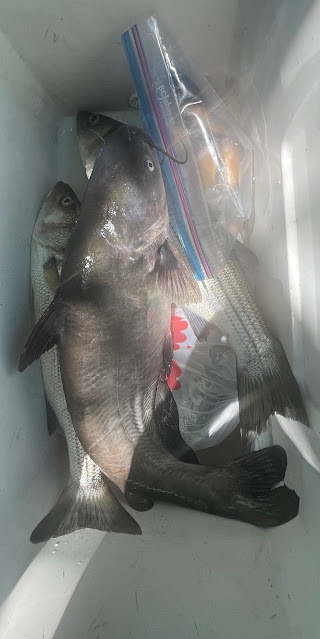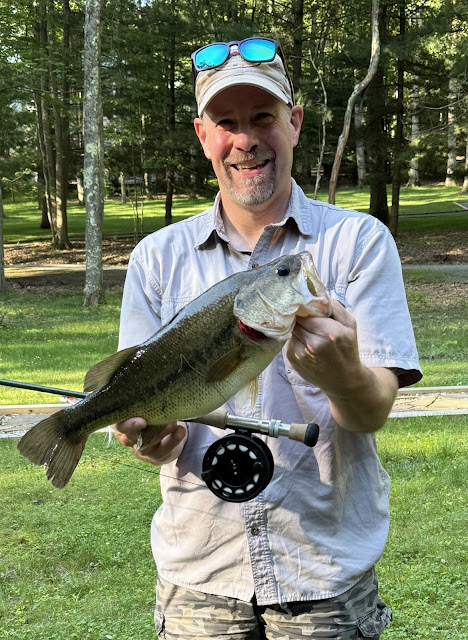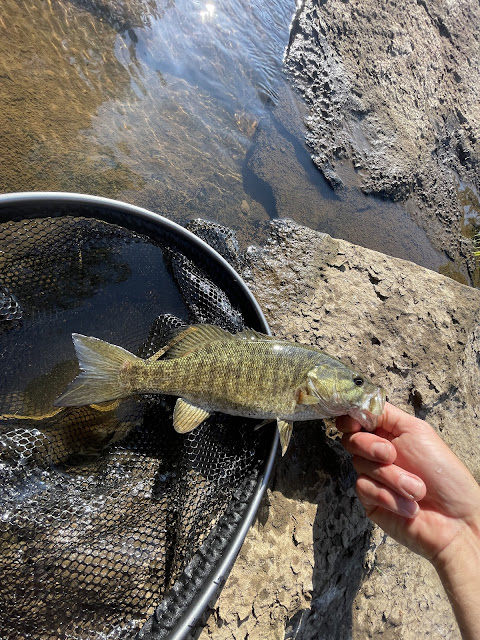New lake. Different kind of bass.
This year for my annual family vacation to the Deep Creek Lake area, we switched and got a house lakeside. I was excited I could not launch and fish at will from the lake instead of being a 20-minute drive from the water.
It would be fly fishing only this year I decided, and I would bring my kayak. Getting there on a Saturday, I found the edge of the lake muddy and choppy from the wake of all the weekend boaters. I tried a few casts from the dock but mainly decided to hit it early in the morning with the boat.
I got up at 5:10am with first light and fished along the docks and edge structure for several hours. I was on the sunny Western side in a back cove when I finally had a largemouth streak in from the weedy bank and take my foam bodied popper fly. He was a good-sized fish just an inch shy of the 21-inch trophy status for Maryland. I decided to bring this one back and eat it. I also decided to fish the shadier side of the lake from now on. There was about a 3-hour window before all the water-skiers and watercraft churned the lake murky again.
The bass was filleted and served with some grilled shrimp. I had dredged the fillets in seasoned flour and them an egg wash before being coated in panko breadcrumbs to fry. It was a hit!
By the third day I had settled on my pattern here. Get up around 5am and paddle the double ocean kayak out and try to find some structure to fish. Usually no one is on the lake at that hour. Then by 9 am the traffic starts.... more like a regatta. The power boaters and water skiers roar up and down. The banks get muddy with the wakes of all the boat traffic and fishing is useless.
I come in and cook breakfast for the families, then lunch, maybe a short cat nap if I am lucky. Then, I have about 30 minutes in the evening to fish, but the water is churned up along the shores by then.
Yesterday I scored that big largemouth. Today I got a 17 inch largemouth and a 17inch smallmouth. The tale of two fish there. That largemouth was probably half the age of that small mouth but fought twice as hard. It pulled my kayak around!
I was tempted to keep both today but decided the little guy and the old salt needed to go back.
I am glad I am here. The feels like temps at home are 106 right now back home. It is 86 right here lakeside.
All fish have been caught on topwater bugs and flies so far. Nothing has touched the deceiver or clouser.
Today the fish were hitting well. I got up at 530am and paddled across the lake and fished the far shadier bank. I am starting to figure out where these fish like to hang out. They like the mixed weed beds near 2 points I found. I caught about 7 total fish this morning. All but one were smallmouth. Caught another good sized one that pulled my kayak around a bit. Mabe 17-17 ½ inches. I took a picture with the tape but it apparently didn't take. The other fish was a largemouth 17.5 inches.
Fly fishing from the kayak is a frustrating thing! As soon as you put the paddle down and pick up the rod you drift. Then, you have to try to adjust. So hard. The struggle is real! The inlaws got the same house next year so I will be back. I may bring my small flat bottomed boat and a electric trolling motor next year! I need one of those new high tech lithium lightweight marine batteries but they are expensive.
I picked up two more of each bass species this morning.
Tomorrow morning I’m heading to a top catch and release trout stream. Water is drawn off the bottom of the lake and keeps the river cold. I’m excited for a change of pace and casting a lighter rod.
Got 4 trout and w bunch of small smallies this morning.
Those trout were hitting the sculpin micro jig streamer mostly.
Another decent smallmouth fell to the white Lefty deceiver.
Cold front today no there wasn’t as much action but had some casting practice in the wind.
Here are the flies I’ve been using here mostly:





















































